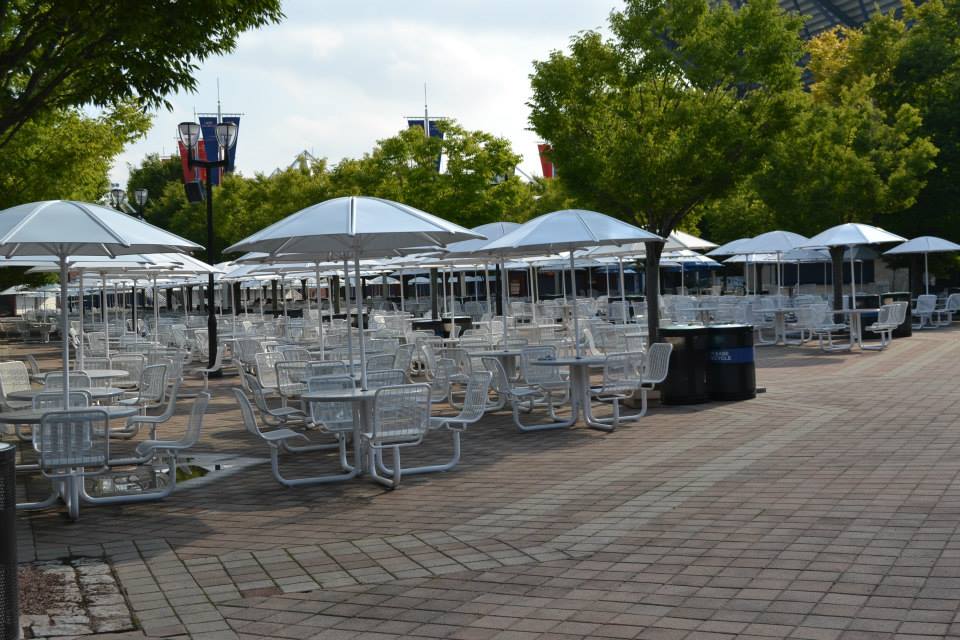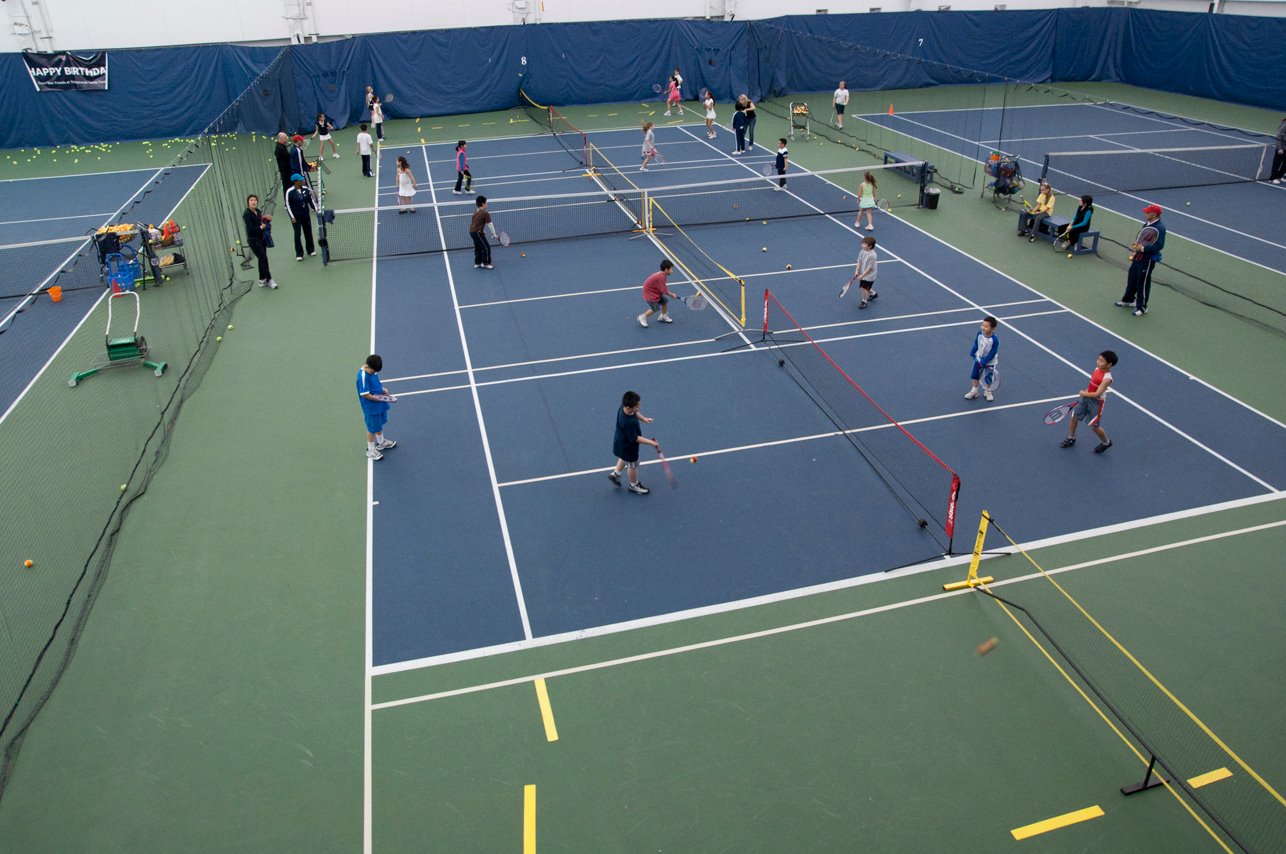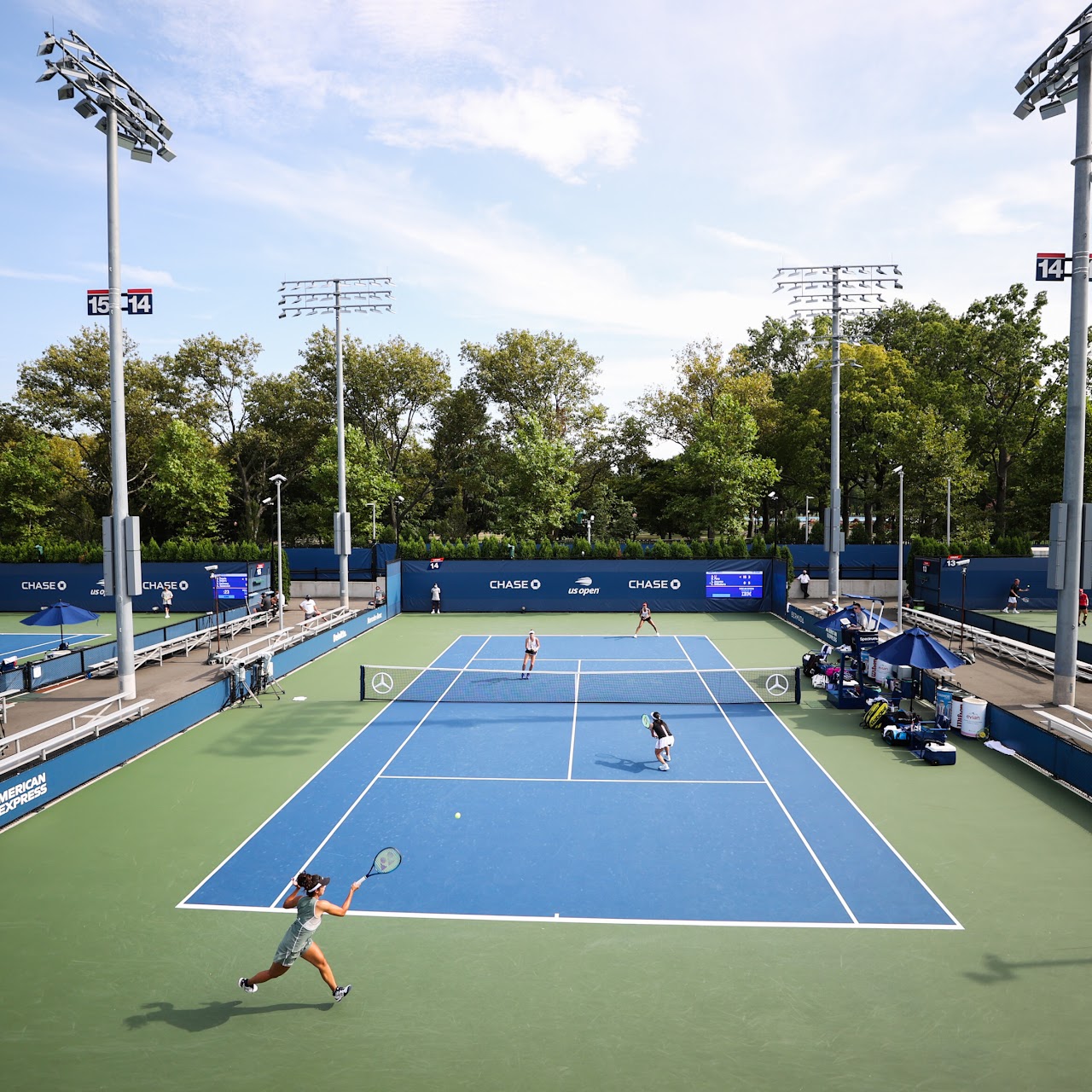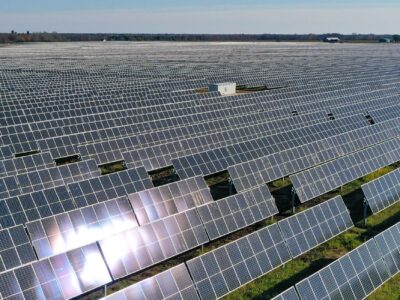When the U.S. Tennis Association (USTA) renamed the National Tennis Center (NTC) — the site of the prestigious U.S. Open — in honor of Billie Jean King in 2006, the tennis legend and pioneering social activist saw it as an opportunity to make “U.S. Open the most environmentally responsible tennis event in the world.” To announce this new eco-focused agenda, the U.S. Open adopted the motto: “Our Courts May Be Blue, But We’re Thinking Green.”
The Open also created the first environmental public service announcement, which included King, Venus Williams, and the Bryan brothers, to be broadcast at a major sporting event.
To raise further awareness about sustainability, the 2008 U.S. Open also featured Natural Resources Defense Council (NRDC) volunteers, who handed out free NYC MetroCards to fans who answered a question about environmentalism.

Photo Courtesy ntc.usta
However, this “green” mission basically started from scratch. In 2007, the NTC did not have a single recycling bin. Not only were recycling and composting bins placed throughout the NTC, but the USTA also launched a pioneering recycling initiative in 2008 that involved recycling more than 15,000 tennis ball cans and donated 45,000 balls.
This initiative has continued to evolve. At the 2022 U.S. Open, metal lids from the tennis ball cans were recycled to benefit the Ronald McDonald House’s Pull Tab Collection Program.
Furthermore, the cans also contain Wilson’s Eco Overcap, which uses 50% less plastic than typical versions.
In 2011, the USTA upgraded its composting efforts, which focused on the back-of-house operations of the NTC’s largest kitchen in the Arthur Ashe Stadium, before expanding to the other on-site kitchens. Over the years, more than 700 tons of food waste have been repurposed into nutrient-rich compost for farms and gardens, with more than 100 tons of food getting donated to community organizations.
Additionally, 20% of its produce and ingredients used by the Open’s concessionaire, Levy Restaurants, are locally sourced, and it also incorporates imperfect-looking vegetables and fruits into its dips and sauces.

Photo Courtesy USTA National Tennis Center
The Open also went from having its millions of napkins sourced from trees in 2007 to napkins with at least 90% post-consumer recycled content just one year later. This change protects forest habitats and lower greenhouse gas emissions. Paper towels, bathroom tissue, and media guides now all contain one-third of recycled content, and tickets are handled electronically.
Similarly, the USTA provides the daily event cards digitally instead of creating 48,000 plastic versions per tournament. Plastic straws have been replaced with paper or compostable versions, while concession stand service ware contains compostable, bio-based materials. The USTA also has partnered with the “One Tree Planted” project, starting in 2021, to have a tree for every player competing in the tournament.
These green programs at the NTC, combined with offsetting energy, have resulted in the U.S. Open operating entirely on renewable energy. The offsets have been particularly useful in countering the emissions relating to travel.
In 2018, the USTA’s offset plans started to involve investing in safe cookstoves for Malawi. Through waste diversion, recyclable paper, and renewable energy certificates, greenhouse gas emissions were lowered by more than 100,000 metric tons by 2019, with the Open’s diversion rate overall reaching 97% that year.

Photo Courtesy USTA National Tennis Center
One of the first notable North American organizations to sign onto the United Nations Sports for Climate Action Framework, the U.S. Open has continued to demonstrate its environmental commitment in many ways. The ball crews are now provided with reusable water bottles and wear shirts containing fabric created from recycled plastic bottles. NTC’s cleaning products are all Green Seal certified, and the installation of LED court lights saves an estimated 90,000 kWh.
Two standout examples of the NTC’s “green” mission are the Grandstand Stadium and the Louis Armstrong Stadium, which opened in 2016 and 2018, respectively.
Both were built with materials containing recycled content, while low-emitting paints and finishes helped to reduce the emission of pollutants.
Water consumption at the venues is 40% less than used at similarly sized buildings. The majority of construction waste was recycled at the two stadiums — 80% at the Grandstand and 95% at the Armstrong — and both feature energy-saving designs compared to standard buildings — 15% less energy at the Grandstand and almost 30% at the Armstrong.

Photo Courtesy ntc.usta
Both structures, along with the center’s Transportation Building, have earned the highly-regarded Leadership in Energy and Environmental Design designation from the U.S. Green Building Council. The Armstrong Stadium, which received a Silver certification, has been hailed for having the first naturally-ventilated stadium with a retractable roof worldwide.
The USTA was also honored by the Green Sports Alliance in 2019 as its Environmental Leadership award winner. Upon receiving this award, Billie Jean King stated, “The significant action taken almost 13 years ago has served as a springboard to positively impact the environment for the U.S. Open and the National Tennis Center and has set an example for other tennis and sporting events to emulate.”





